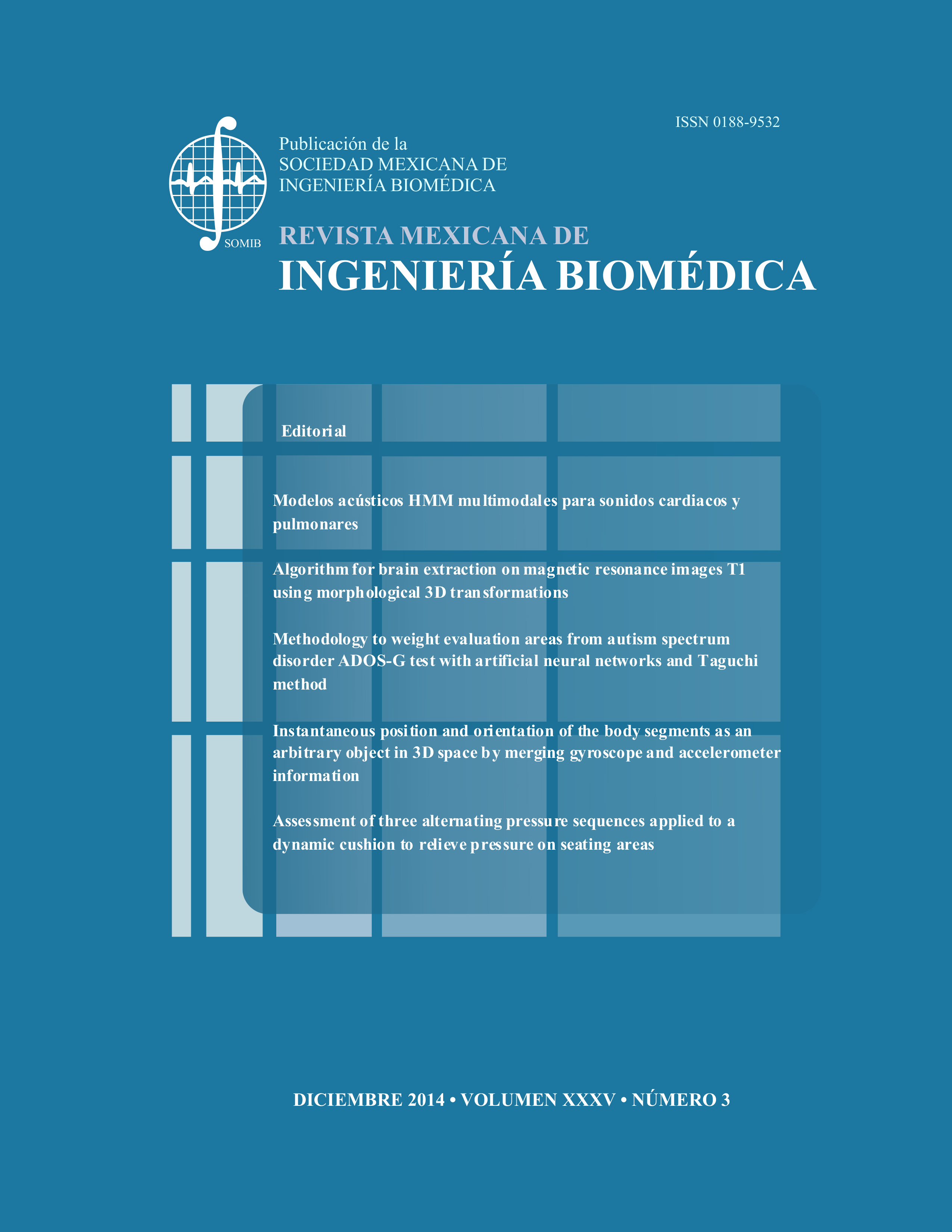Assessment of three alternating pressure sequences applied to a dynamic cushion to relieve pressure on seating areas
Abstract
Pressure ulcers are injuries to the skin and/or underlying tissues caused by prolonged high pressures on supporting body areas, they affect mainly people with poor mobility that have stayed in seating position for a long time. Reducing the amount and duration of pressure has been widely accepted for minimizing the risk of formation of pressure ulcers. Recently, dynamic cushions have been developed to relieve pressure on supporting areas; nevertheless, there is no sufficient information about the adequate characteristics of alternating sequences for pressure ulcers prevention. Therefore, the aim of this work is to explore three sequences of alternating movements designed for an air cell cushion by comparing pressure redistribution on supporting areas when applied on healthy volunteers. The purpose of these sequences is to redistribute the pressure over a larger contact area. To evaluate the effect of the alternating sequences, eight healthy volunteers were asked to sit on the air cell cushion, and to try the three alternating sequences for 12 minutes, 2 minutes on static mode and 10 minutes on alternating mode. A parameter for quantitative assessment of alternating sequences was proposed in this work by determining the coefficient of variation of interface pressure. Furthermore, the percentage of relative change of coefficient of variation was computed for evaluating performance of the alternating sequences comparing to the static mode. It was found that the three proposed strategies maintained values of interface pressure lower than previous work. Additionally, the relative change allowed to differentiate the effects of alternation of each sequence showing the second strategy as the most effective. The results are encouraging for further studies in subjects who require a wheelchair for mobility.
Downloads
Published
How to Cite
Issue
Section
License
Upon acceptance of an article in the RMIB, corresponding authors will be asked to fulfill and sign the copyright and the journal publishing agreement, which will allow the RMIB authorization to publish this document in any media without limitations and without any cost. Authors may reuse parts of the paper in other documents and reproduce part or all of it for their personal use as long as a bibliographic reference is made to the RMIB. However written permission of the Publisher is required for resale or distribution outside the corresponding author institution and for all other derivative works, including compilations and translations.




